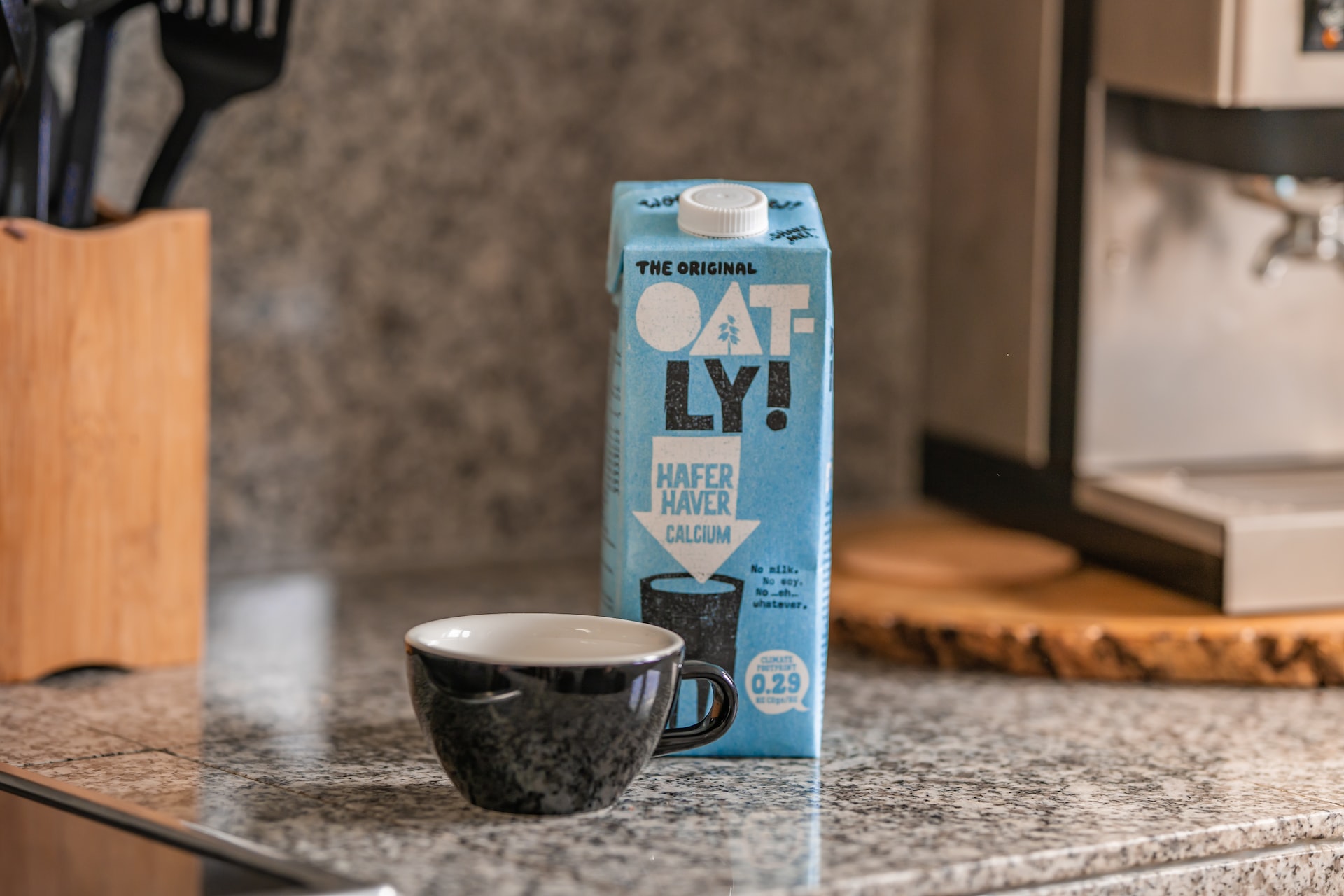
Oat Milk vs. Almond Milk: What’s Greener?
We are reader-supported. When you buy through links on our site, we may earn affiliate commission.
People have been drinking milk for 6,000 years, with evidence of early consumption pointing to Kenya and Sudan. For decades, dairy has been a cornerstone of dietary health. However, recent trends have indicated a significant decline. Alternatives like oat, soy, almond and more have risen. So who wins the oat milk vs almond milk debate?
Why Are People Switching?
According to the U.S. Department of Agriculture (USDA), dairy consumption has continuously fallen for 70 years — most notably from 2010 to 2019, when people reported drinking 20.7% less cow’s milk.
The reasons for drinking less milk vary, especially with today’s non-dairy options for better digestive health and consumers’ keen desire to reduce their carbon footprint.
Of all the dairy alternatives on the market, oat milk and almond milk are the most popular and sustainable — but just how eco-friendly are they and which is better for the environment? Continue reading to find out.
The Problem With Dairy
Consuming a tall glass of milk may not be everyone’s first beverage choice, but dairy product sales, such as ice cream, yogurt, and butter, are still climbing. Today, the U.S. dairy industry is responsible for 2% of the nation’s greenhouse gases.
Unfortunately, agricultural livestock overall is not exactly known for its low-carbon impacts. Studies have shown that livestock production produces methane gas, accounting for 16% of human-induced emissions and acting as one of the top drivers of global warming.
The dairy sector carries most of the blame for releasing livestock-based carbon dioxide (CO2), with beef and cattle milk contributing 41% of the sector’s outputs. Further studies have shown that 72% of dairy emissions occur before the milk ever leaves the farm.
Dairy production has significant direct and indirect ecological repercussions, as well. For example, livestock manure contaminates water with harmful nitrogen (N) and phosphorus (P) and degrades land used for feed.
The excess CO2 uptake from dairy processing also contributes to ocean warming and acidification, causing glacier melting and rising sea levels.
Although drinking milk has health and economic benefits, non-dairy products provide a much greener, plant-based alternative for those interested in sustainable living.
The Most Eco-Friendly Alternative: Oat Milk vs. Almond Milk
The USDA has long touted milk’s health benefits from childhood to adulthood. According to experts, dairy contains ample calcium, potassium and vitamin D levels that promote stronger bones and helps prevent osteoporosis in older adults.
However, milk alternatives like oat milk and almond milk have their own health benefits, such as fewer calories — one cup of almond milk contains 39 calories, while you consume about 150 calories in a cup of cow’s milk. Likewise, oat milk has a much higher fiber content for those with digestive problems.
Regardless of whether you opt for non-dairy milk products because of veganism or lactose intolerance, it’s hard to look past their ecological benefits, such as the following:
- Land use: A liter of almond milk uses 0.5 square meters (m2) of land compared to oat milk at 0.66 m2 — dairy uses 54 m2.
- Water use: Oat milk uses significantly less water than almond milk at 48.24 liters (L) to 371.46 L — compared to dairy’s 628.2 L of water.
- Greenhouse gases: A liter of almond milk produces slightly less CO2 than oat milk at 0.7 kilograms versus 0.9 kg — compared to dairy at 3.15 kg.
Oat and almond milk also cause about the same amount of eutrophication — excess nutrient runoff — during processing at 1.62 grams (g) and 1.5 g, respectively. Conversely, dairy emits 10.65 g of harmful nutrient runoff.
While some of the ecological benefits of oat milk versus almond milk are relatively close, many argue that oat milk is greener than almond milk. This comes from oat milk using significantly less water and its low CO2 emissions concentration.
Oat Milk vs Almond Milk: Choose Wisely
Debating oat milk vs almond milk is difficult, and there’s much to consider regarding the ecological impacts and overall sustainability. Ultimately, whatever non-dairy alternative you transition to is wise for the planet and your health.
Share on
Like what you read? Join other Environment.co readers!
Get the latest updates on our planet by subscribing to the Environment.co newsletter!
About the author
Grace Waters
Always inspired by the natural world around her, Grace grew up exploring tide pools and hiking mountain trails, developing a deep appreciation for biodiversity and conservation. Now, Grace works as the Senior Editor of Environment.co where she covers topics related to emerging clean technologies, zero-waste initiatives, and the intersection of environmental policy and everyday living.





